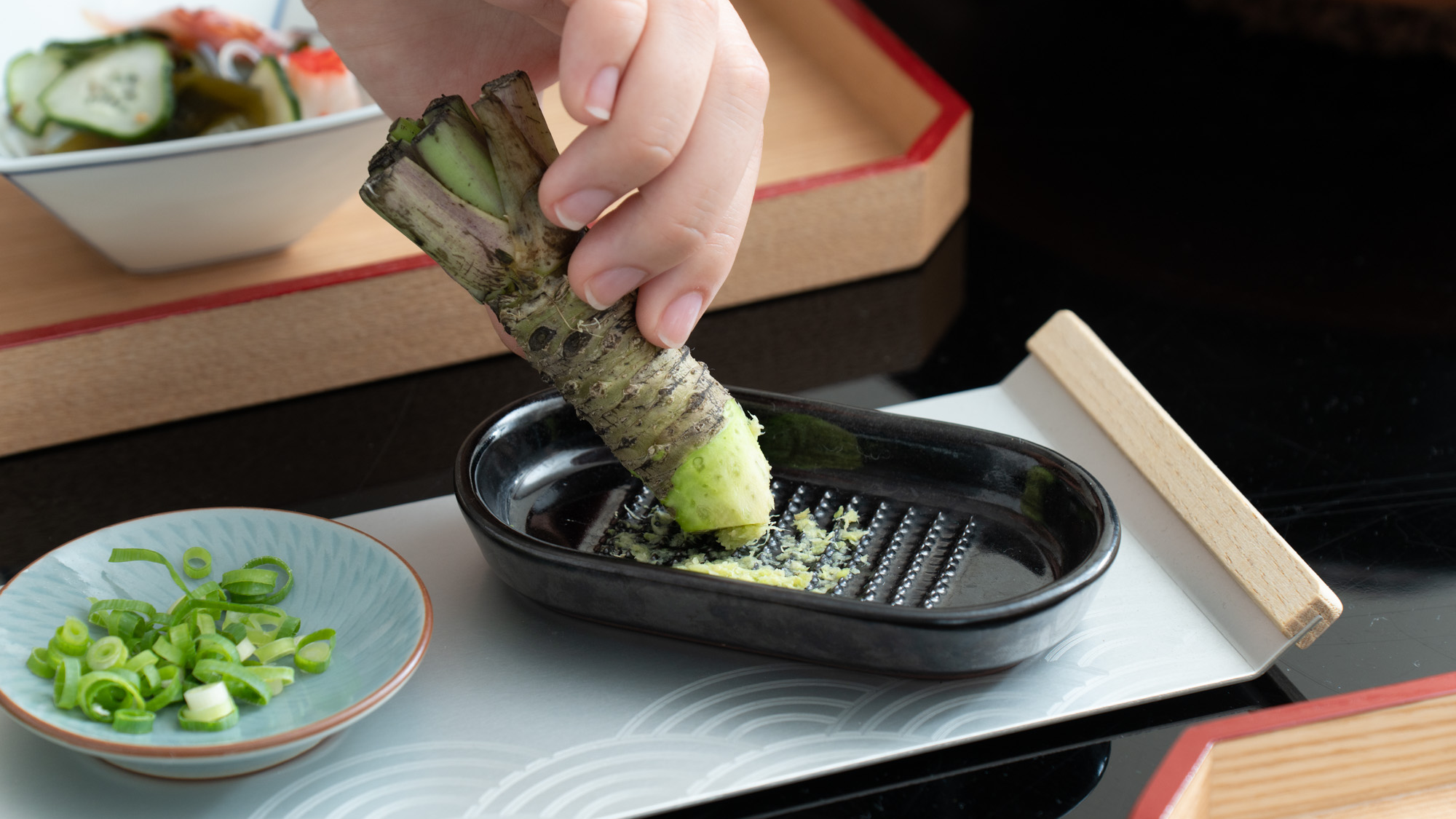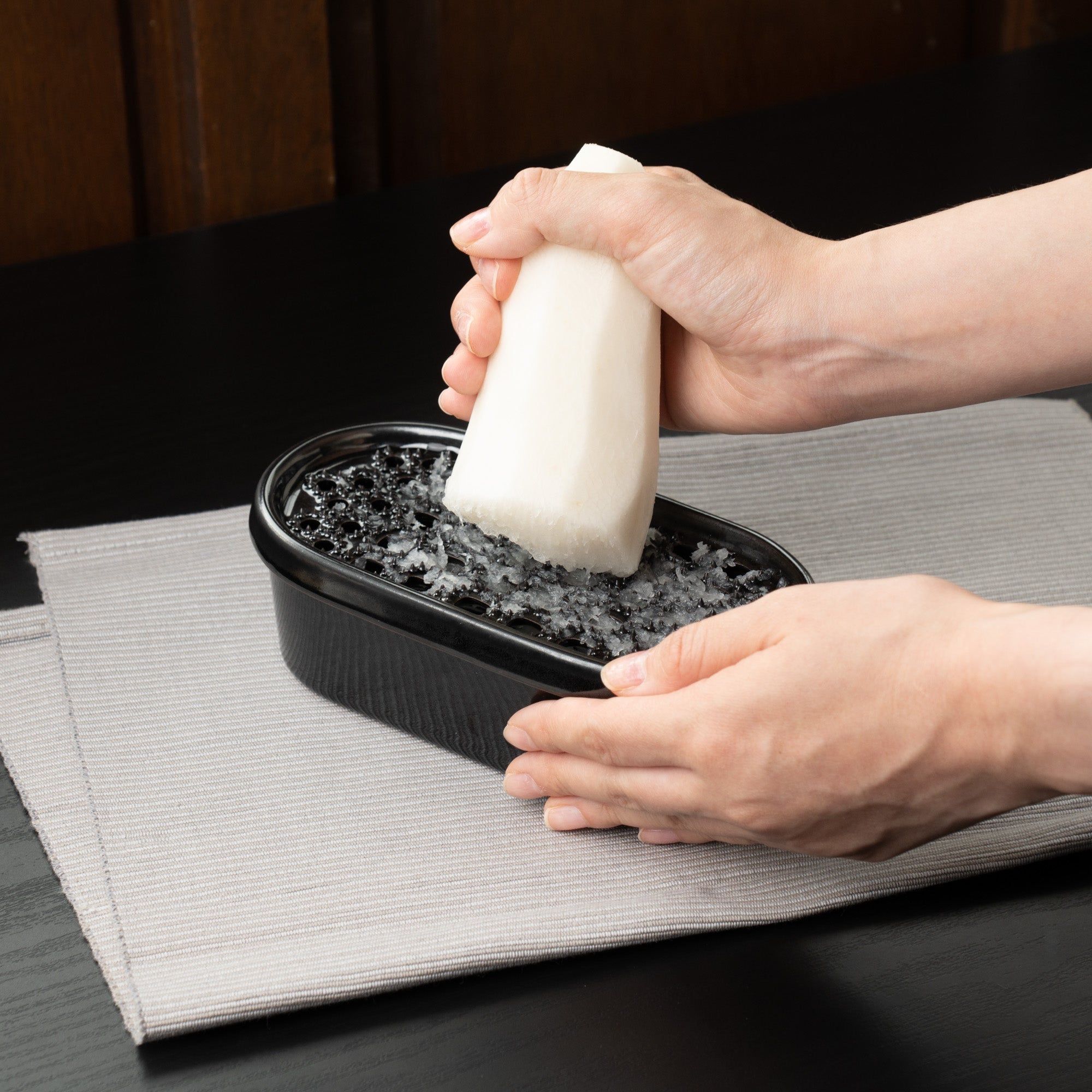
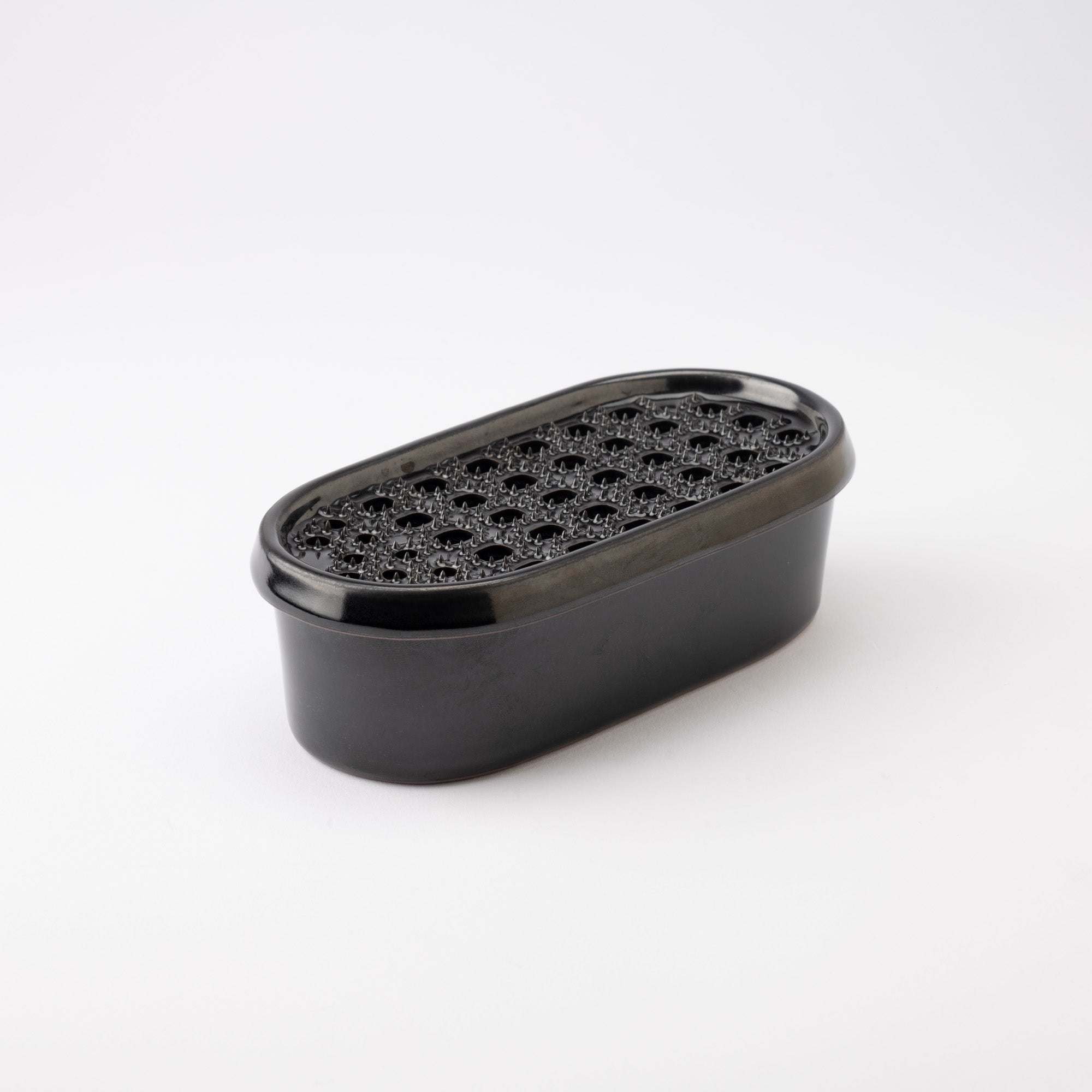





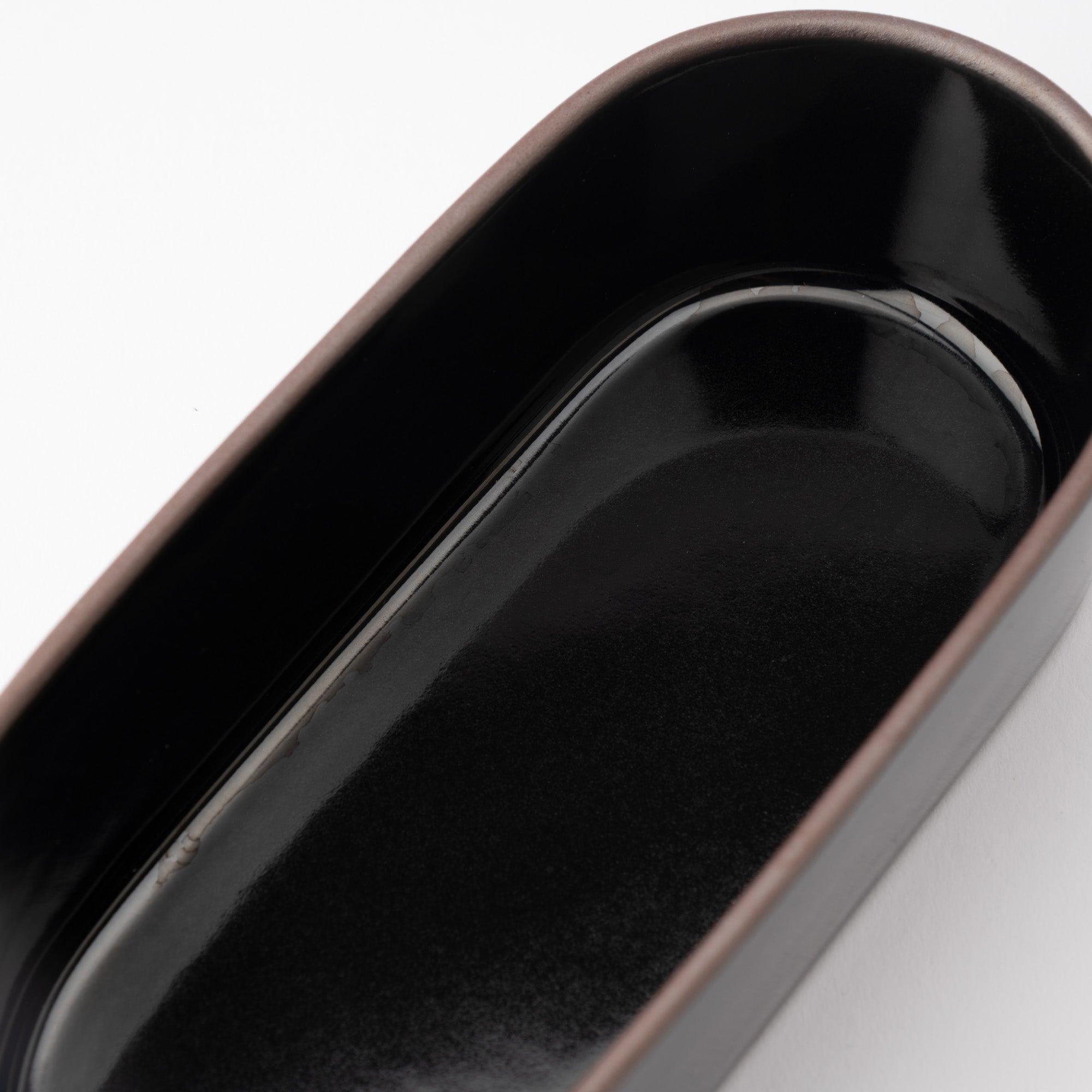
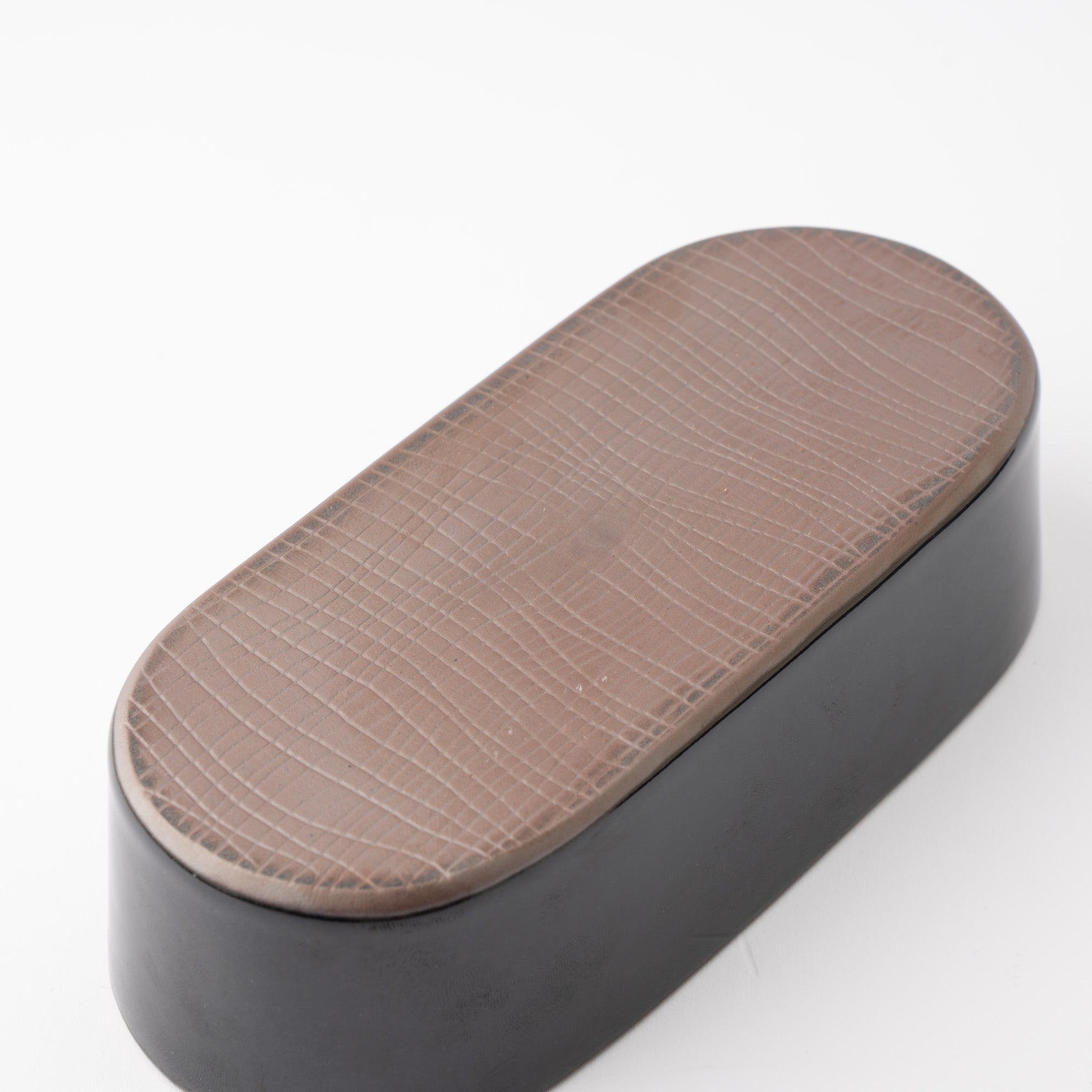
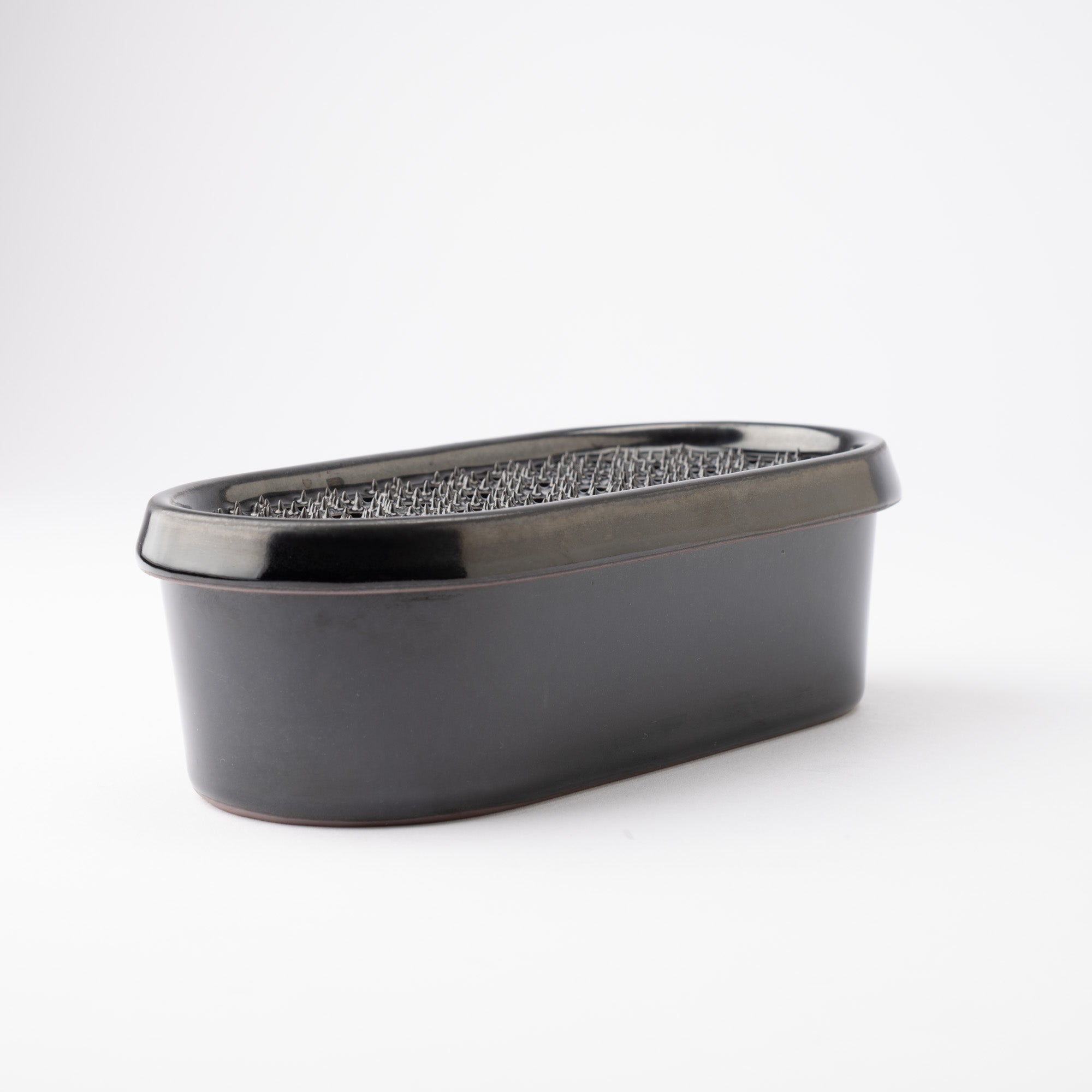
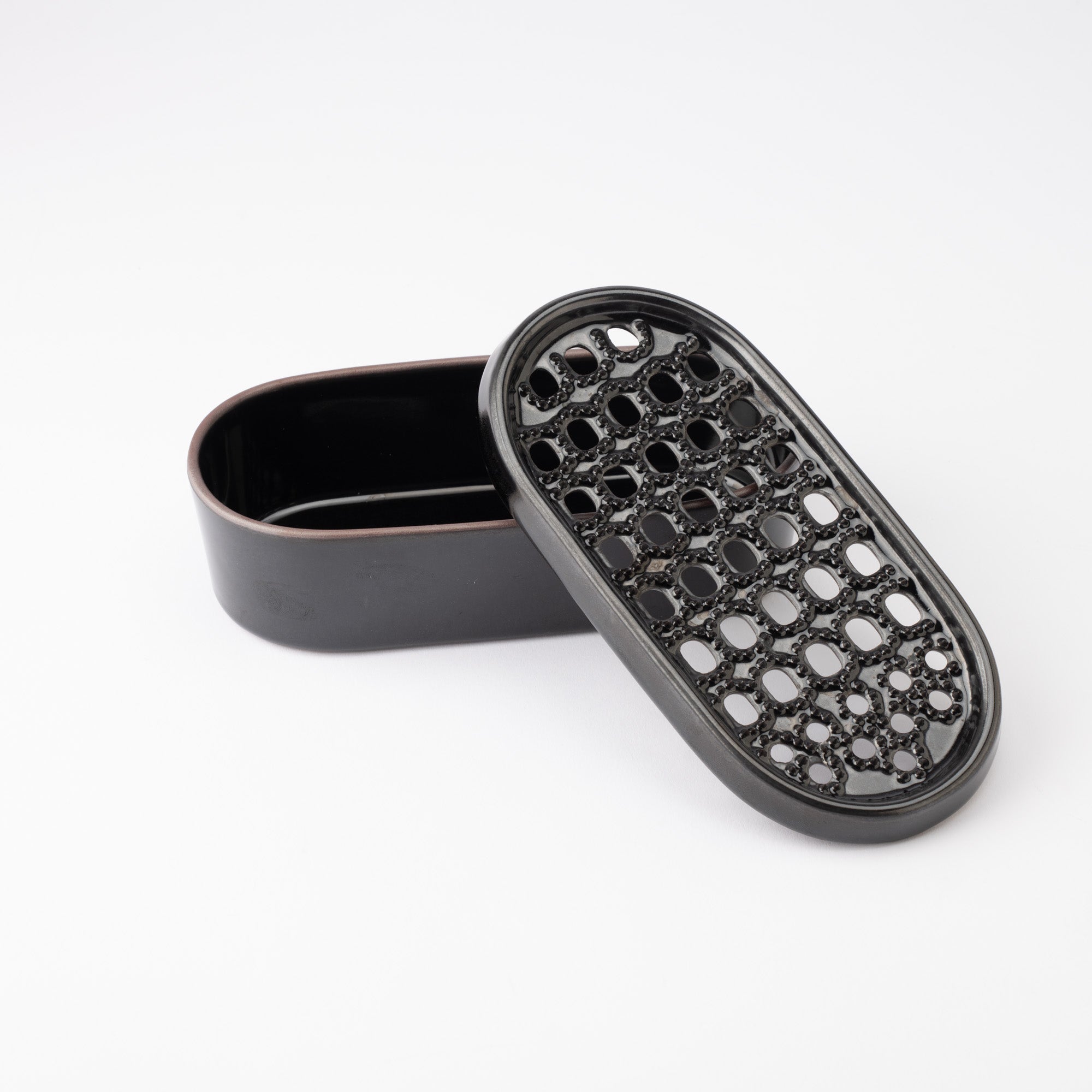
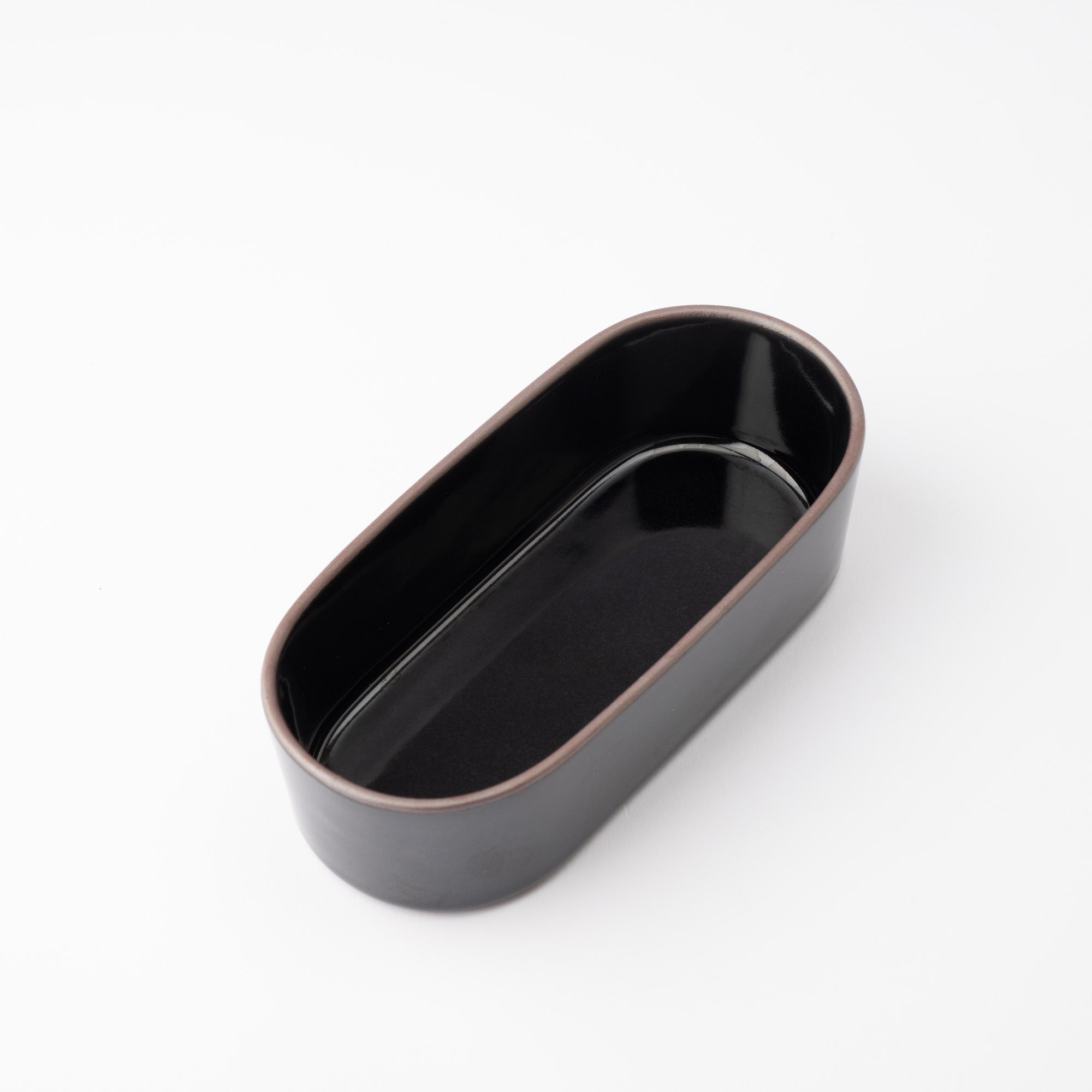
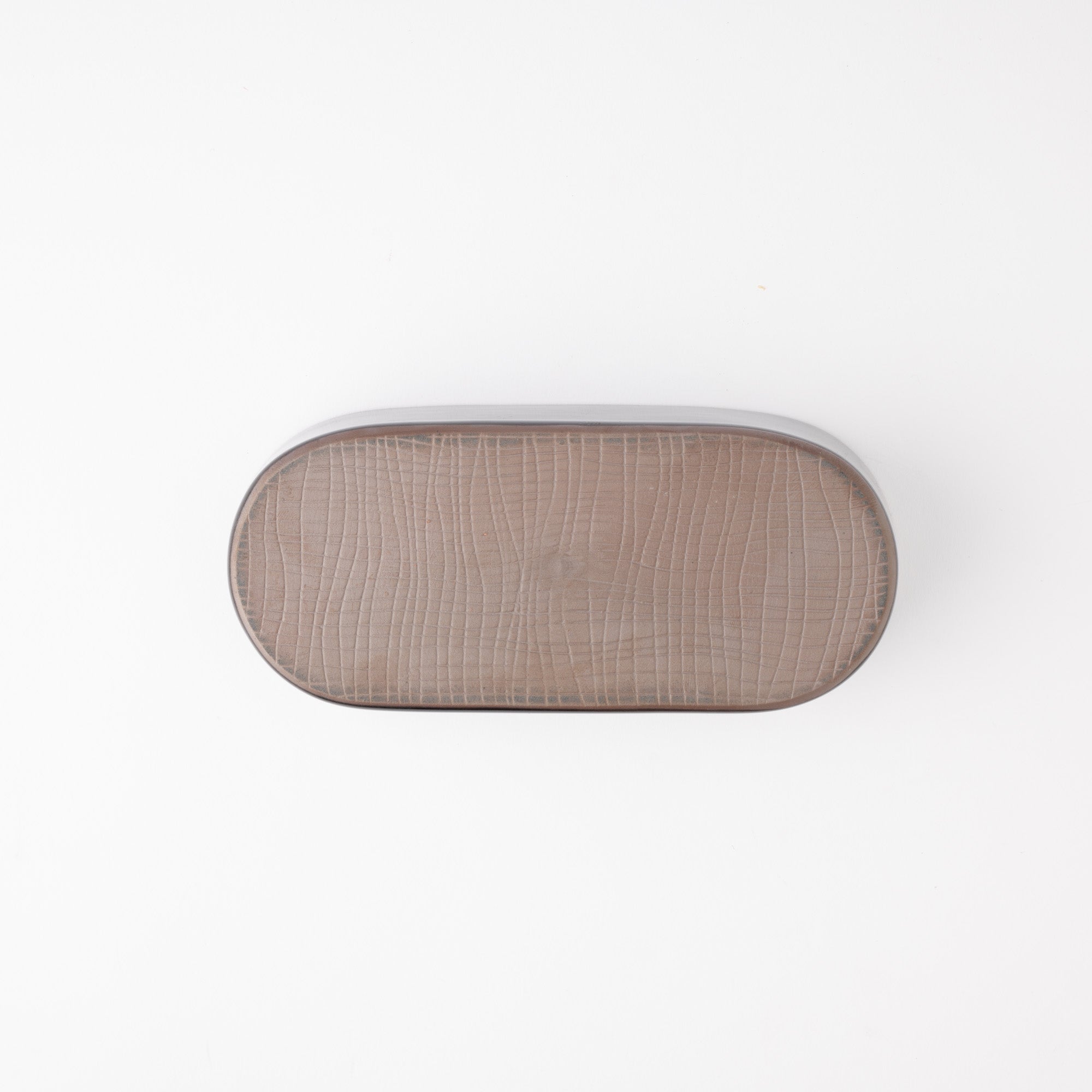
Schwarz Daikon-Reibe
Estimated Shipping Widget will be displayed here!
Um geriebenen Daikon (japanischen Rettich) für Tempura oder vielleicht Soba oder Udon zuzubereiten, benötigen Sie diesen Artikel. Dies ist eine Banko-Ware-Reibe zum Reiben von Gemüse wie Daikon oder japanischer Yamswurzel. yamaimo.
Der Deckel ist mit Löchern versehen, zwischen denen sich kleine, dornartige Spitzen befinden. Der Deckel befindet sich über einer abgerundeten, rechteckigen Schüssel, die das geriebene Gemüse und seinen natürlichen Saft auffängt. Der Boden ist rutschfest, sodass er sich beim Reiben nicht bewegt, wenn er auf ein feuchtes Tuch gelegt wird.
Vorsicht ist geboten: Hören Sie mit dem Reiben auf, sobald das Gemüse zu klein wird. Da die Zähne ziemlich scharf sind, achten Sie darauf, dass Ihre Finger beim Reiben nicht zu nah herankommen.
Bei genauerem Hinsehen fällt auf, dass eine Seite des Deckels kleinere Löcher und kleinere Zähne aufweist. Mit diesem Teil können Sie kleinere Lebensmittel wie geschnittenes Obst oder Ingwer reiben.
EINZELHEITEN
| Quantity | 1 |
| Size | L 9 cm (3.5 in) x W 18.5 cm (7.3 in) x H 5.5 cm (2.2 in) |
| Capacity | 390 ml (13.2 fl oz) |
| Material | Stoneware |
| Microwave | Yes |
| Dishwasher | Yes |
Kunsthandwerk
Von alltäglichem Geschirr bis hin zu Blumenvasen ist Yokkaichi Banko-Ware, allgemein als Banko-Ware bezeichnet, für ihre bemerkenswerte Vielfalt bekannt. Zu den bekanntesten Kreationen gehört die donabe, oder japanischer Tontopf. Er ist wegen seiner Haltbarkeit und Wärmespeicherung beliebt und ist zu einem Grundnahrungsmittel für hausgemachte Mahlzeiten geworden – und heute sind rund 80 Prozent aller in Japan produzierten Donabe Banko-Ware.
Banko-Keramik entstand in der Mitte der Edo-Zeit (1603–1868 n. Chr.), als ein kultivierter Teeliebhaber namens Nunami Rozan im heutigen Kuwana in der Präfektur Mie mit der Herstellung von Keramik begann. Anstatt die Ware nach ihrer Region zu benennen, wählte er das Wort „Banko„“ – was „Ewigkeit“ bedeutet – als Wunsch, dass seine Kreationen über Generationen hinweg Bestand haben. Dieser beständige Geist lebt bis heute weiter, und in Anerkennung seines kulturellen und historischen Werts wurde Banko-Ware 1979 vom japanischen Ministerium für Wirtschaft, Handel und Industrie zum traditionellen Kunsthandwerk erklärt.
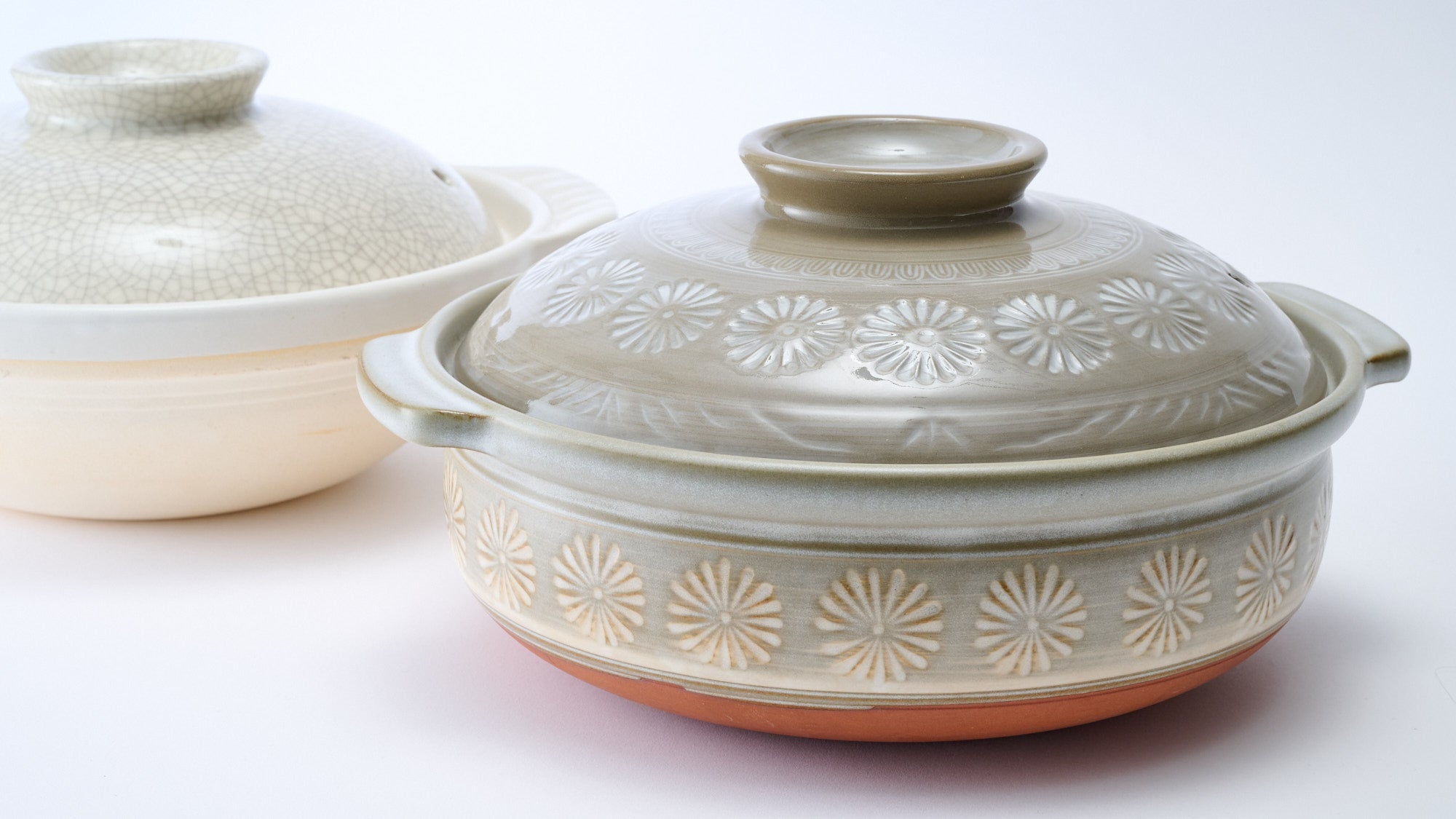
Optionen auswählen













Reiben
Viele Gerichte der japanischen Küche erfordern die Verwendung von frisch geriebenem Gemüse, wie zum Beispiel Daikon Rettich und Wasabi. Funktional und stilvoll: Japanische Reiben bewahren die Feuchtigkeit und das Aroma Ihrer Zutaten und sorgen für den authentischsten japanischen Geschmack.
